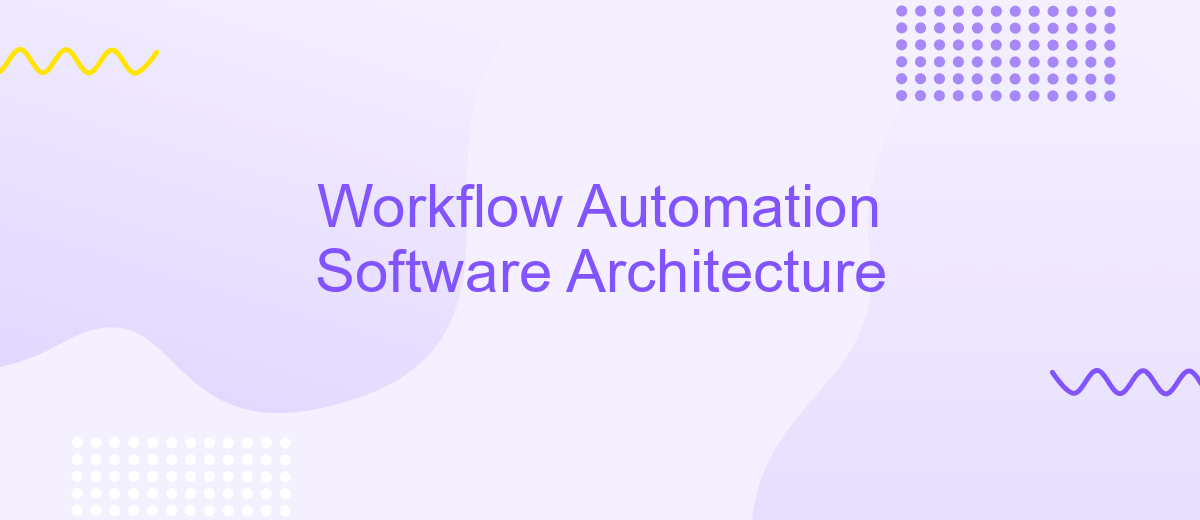Workflow Automation Software Architecture
In today's fast-paced business environment, workflow automation software architecture plays a crucial role in streamlining operations and enhancing productivity. By automating repetitive tasks and integrating various systems, this technology enables organizations to optimize their processes, reduce errors, and focus on strategic activities. This article explores the key components, benefits, and best practices for designing an effective workflow automation software architecture.
Introduction
Workflow automation software architecture is a critical aspect of modern business operations, enabling organizations to streamline processes, reduce manual intervention, and enhance productivity. By leveraging advanced technologies, companies can automate repetitive tasks, ensuring consistency and accuracy in their workflows.
- Improved efficiency and speed
- Reduced human error
- Enhanced scalability
- Seamless integration with existing systems
One of the key components in workflow automation is the ability to integrate various applications and services seamlessly. Tools like ApiX-Drive facilitate these integrations by providing a user-friendly platform that connects disparate systems without requiring extensive coding knowledge. This enables businesses to create cohesive workflows that span multiple applications, ensuring data flows smoothly across the organization.
Understanding Workflow

Workflow automation refers to the design, execution, and automation of processes based on a set of procedural rules. It involves the use of software to streamline and optimize repetitive tasks, ensuring that each step in a process is carried out efficiently and accurately. Understanding workflow is crucial for businesses aiming to enhance productivity, reduce errors, and improve overall operational efficiency. By automating routine tasks, employees can focus on more strategic activities that require human intervention and creativity.
Integrating various applications and services is a key aspect of workflow automation. Tools like ApiX-Drive facilitate seamless integration by connecting different software systems, allowing data to flow effortlessly between them. This eliminates the need for manual data entry and reduces the risk of errors. ApiX-Drive supports a wide range of integrations, enabling businesses to automate complex workflows with minimal effort. By leveraging such tools, organizations can ensure that their processes are not only automated but also interconnected, providing a comprehensive solution for workflow management.
Workflow Architecture Components

Workflow automation software architecture is composed of several key components that work together to streamline and automate business processes. Understanding these components is essential for designing an effective workflow system.
- Process Definition: This component involves defining the sequence of tasks, decision points, and conditions that make up the workflow. It usually includes a visual interface for mapping out the workflow.
- Task Management: This part handles the assignment, scheduling, and tracking of tasks within the workflow. It ensures that tasks are executed in the correct order and that deadlines are met.
- Integration Services: Tools like ApiX-Drive facilitate the integration of various software applications and services, enabling seamless data flow and interaction between different systems.
- Monitoring and Reporting: This component provides real-time insights into workflow performance, helping identify bottlenecks and areas for improvement. It includes dashboards and reporting tools.
- Security and Compliance: Ensures that the workflow adheres to regulatory requirements and that data is protected against unauthorized access.
Each of these components plays a crucial role in creating a robust and efficient workflow automation system. By integrating tools like ApiX-Drive, businesses can enhance their workflows with seamless connectivity and improved data management.
Benefits and Challenges

Workflow automation software architecture offers numerous benefits, enhancing efficiency and reducing manual errors. By automating repetitive tasks, businesses can allocate resources more effectively and focus on strategic initiatives. Additionally, automation improves consistency and reliability, ensuring that processes are executed with precision.
However, implementing workflow automation also presents challenges. The initial setup can be time-consuming and may require significant investment in both technology and training. Ensuring seamless integration with existing systems is another critical hurdle. Utilizing services like ApiX-Drive can facilitate this process, offering streamlined integration solutions that connect various applications effortlessly.
- Increased operational efficiency
- Reduced human errors
- Enhanced process consistency
- Time and cost savings
- Improved resource allocation
Despite these challenges, the long-term advantages of workflow automation are substantial. Organizations that successfully implement and maintain automated workflows can achieve higher productivity and better overall performance. Leveraging tools like ApiX-Drive for integration can significantly smooth the transition, making the adoption process more manageable.
Implementation Considerations
When implementing workflow automation software, one must consider the scalability and flexibility of the architecture. It is crucial to design the system in a way that allows for easy integration with various third-party services and applications. Leveraging APIs and middleware solutions can facilitate seamless communication between different components. For example, using a service like ApiX-Drive can simplify the process of connecting disparate systems, ensuring that data flows smoothly and efficiently across the entire workflow.
Security and data integrity are also paramount in workflow automation implementations. Ensuring that all data transfers are encrypted and that access controls are in place to prevent unauthorized access is essential. Additionally, the system should be designed to handle errors gracefully, with robust logging and monitoring to quickly identify and resolve issues. By addressing these considerations, organizations can create a reliable and efficient workflow automation system that meets their operational needs and enhances productivity.


FAQ
What is Workflow Automation Software Architecture?
How do I choose the right tools for workflow automation?
Can workflow automation software integrate with existing systems?
What are the benefits of implementing workflow automation?
How can I ensure the security of automated workflows?
Do you want to achieve your goals in business, career and life faster and better? Do it with ApiX-Drive – a tool that will remove a significant part of the routine from workflows and free up additional time to achieve your goals. Test the capabilities of Apix-Drive for free – see for yourself the effectiveness of the tool.

